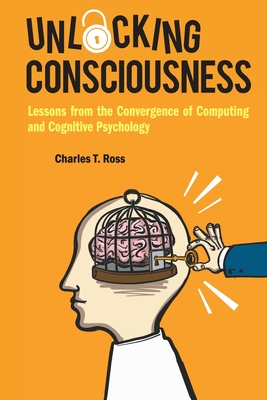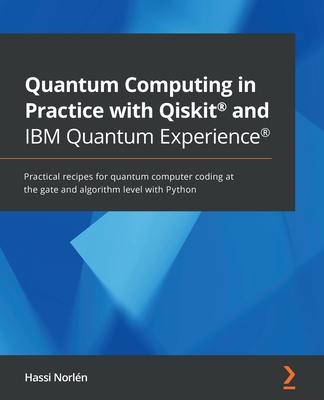What Is Thought?
暫譯: 思考是什麼?
Eric B. Baum
- 出版商: MIT
- 出版日期: 2003-12-19
- 售價: $1,300
- 貴賓價: 9.8 折 $1,274
- 語言: 英文
- 頁數: 492
- 裝訂: Hardcover
- ISBN: 0262025485
- ISBN-13: 9780262025485
下單後立即進貨 (約5~7天)
商品描述
Description:
In What Is Thought? Eric Baum proposes a computational explanation of thought. Just as Erwin Schrodinger in his classic 1944 work What Is Life? argued ten years before the discovery of DNA that life must be explainable at a fundamental level by physics and chemistry, Baum contends that the present-day inability of computer science to explain thought and meaning is no reason to doubt there can be such an explanation. Baum argues that the complexity of mind is the outcome of evolution, which has built thought processes that act unlike the standard algorithms of computer science and that to understand the mind we need to understand these thought processes and the evolutionary process that produced them in computational terms.
Baum proposes that underlying mind is a complex but compact program that corresponds to the underlying structure of the world. He argues further that the mind is essentially programmed by DNA. We learn more rapidly than computer scientists have so far been able to explain because the DNA code has programmed the mind to deal only with meaningful possibilities. Thus the mind understands by exploiting semantics, or meaning, for the purposes of computation; constraints are built in so that although there are myriad possibilities, only a few make sense. Evolution discovered corresponding subroutines or shortcuts to speed up its processes and to construct creatures whose survival depends on making the right choice quickly. Baum argues that the structure and nature of thought, meaning, sensation, and consciousness therefore arise naturally from the evolution of programs that exploit the compact structure of the world.
Eric B. Baum has held positions at the University of California at Berkeley, Caltech, MIT, Princeton, and the NEC Research Institute. He is currently developing algorithms based on Machine Learning and Bayesian Reasoning to found a hedge fund.
Table of Contents:
1. Introduction 1 2. The Mind is a Computer Program 33 3. The Turing Test, the Chinese Room, and What Computers Can't Do 67 4. Occam's Razor and Understanding 79 5. Optimization 107 6. Remarks on Occam's Razor 129 7. Reinforcement Learning 145 8. Exploiting Structure 165 9. Modules and Metaphors 215 10. Evolutionary Programming 233 11. Intractability 271 12. The Evolution of Learning 303 13. Language and the Evolution of Thought 349 14. The Evolution of Consciousness 385 15. What is Thought? 437 Notes 443 References 455 Index 465
商品描述(中文翻譯)
**描述:**
在《思考是什麼?》中,Eric Baum 提出了思考的計算解釋。正如 Erwin Schrodinger 在其1944年的經典著作《生命是什麼?》中所主張的,十年前在DNA被發現之前,生命必須在基本層面上由物理學和化學來解釋,Baum 認為當前計算機科學無法解釋思考和意義並不意味著這樣的解釋不可能存在。Baum 主張,心智的複雜性是進化的結果,進化形成了與計算機科學標準算法不同的思考過程,為了理解心智,我們需要理解這些思考過程以及產生它們的進化過程,並用計算的術語來描述。
Baum 提出,心智的底層是一個複雜但緊湊的程序,對應於世界的底層結構。他進一步主張,心智本質上是由DNA編程的。我們學習的速度比計算機科學家迄今為止能夠解釋的要快,因為DNA代碼已經編程了心智,使其僅處理有意義的可能性。因此,心智通過利用語義或意義來理解,以便進行計算;內建的約束使得雖然存在無數的可能性,但只有少數是有意義的。進化發現了相應的子程序或捷徑,以加速其過程並構建生存依賴於快速做出正確選擇的生物。Baum 認為,思考、意義、感知和意識的結構和本質因此自然地源於利用世界緊湊結構的程序的進化。
Eric B. Baum 曾在加州大學伯克利分校、加州理工學院、麻省理工學院、普林斯頓大學和NEC研究所擔任職位。他目前正在開發基於機器學習和貝葉斯推理的算法,以創立一個對沖基金。
**目錄:**
1. 引言 1
2. 心智是計算機程序 33
3. 圖靈測試、中國房間及計算機無法做到的事 67
4. 奧卡姆剃刀與理解 79
5. 優化 107
6. 關於奧卡姆剃刀的備註 129
7. 強化學習 145
8. 利用結構 165
9. 模塊與隱喻 215
10. 進化編程 233
11. 難以處理性 271
12. 學習的進化 303
13. 語言與思考的進化 349
14. 意識的進化 385
15. 思考是什麼? 437
註釋 443
參考文獻 455
索引 465
















